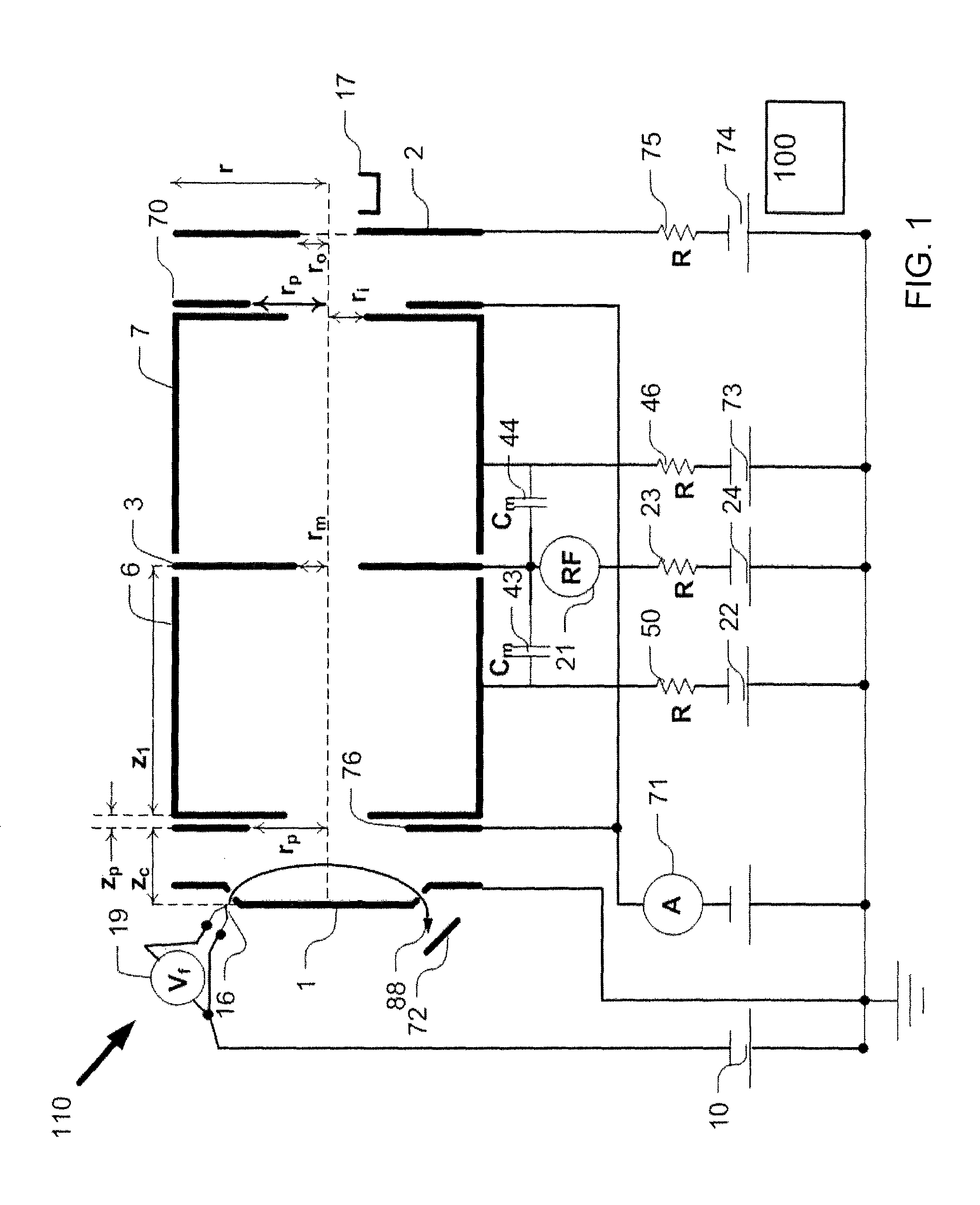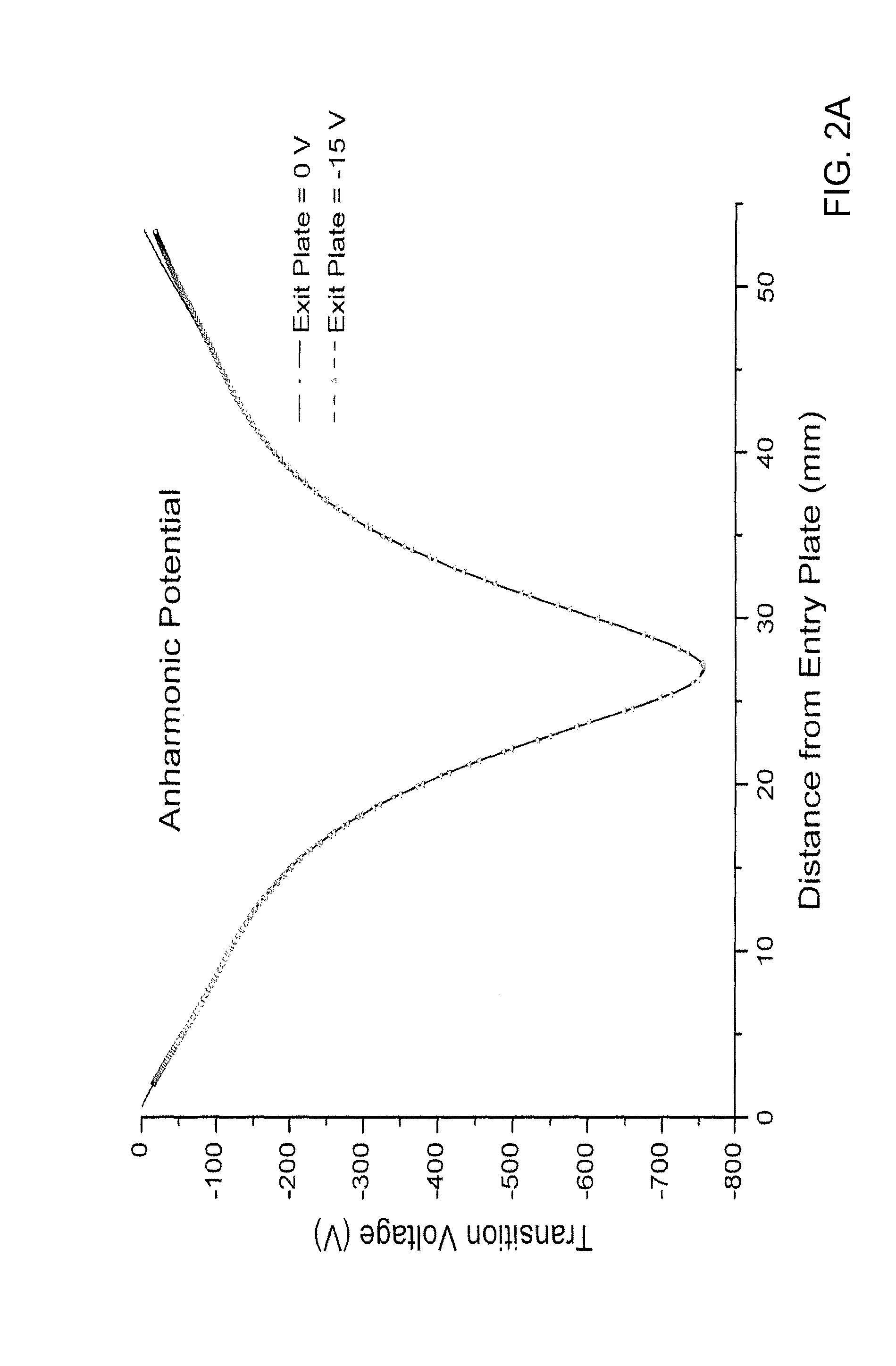Electrostatic ion trap
a technology of electrostatic ion traps and ion traps, which is applied in the field of analytical instruments, can solve the problems of substantial baseline offset of noisy spectra and loss of spectral resolution in higher levels, and achieve the effect of improving mass spectra quality and reducing baseline in mass spectra
- Summary
- Abstract
- Description
- Claims
- Application Information
AI Technical Summary
Benefits of technology
Problems solved by technology
Method used
Image
Examples
Embodiment Construction
[0088]A description of example embodiments of the invention follows.
[0089]An ion trap comprises an electrode structure, including a first and a second opposed mirror electrodes and a central lens therebetween, that produces an electrostatic potential in which ions are confined to trajectories at natural oscillation frequencies, the confining potential being anharmonic. The ion trap also includes an AC excitation source having an excitation frequency f that excites confined ions at a frequency of about a multiple of the natural oscillation frequency of the ions, the AC excitation frequency source preferably being connected to the central lens.
[0090]Turning now to FIG. 1, an ion trap 110 comprises an electrode structure made up of two plates 1 and 2, two cup-shaped electrodes 6 and 7, and a flat central lens 3. In this example, each plate 1 and 2 is about 0.025″ thick and about 1″ in diameter. Plate 1 includes a protrusion of about 0.075″ in height and about 0.625″ in largest dimensio...
PUM
 Login to View More
Login to View More Abstract
Description
Claims
Application Information
 Login to View More
Login to View More - R&D
- Intellectual Property
- Life Sciences
- Materials
- Tech Scout
- Unparalleled Data Quality
- Higher Quality Content
- 60% Fewer Hallucinations
Browse by: Latest US Patents, China's latest patents, Technical Efficacy Thesaurus, Application Domain, Technology Topic, Popular Technical Reports.
© 2025 PatSnap. All rights reserved.Legal|Privacy policy|Modern Slavery Act Transparency Statement|Sitemap|About US| Contact US: help@patsnap.com



